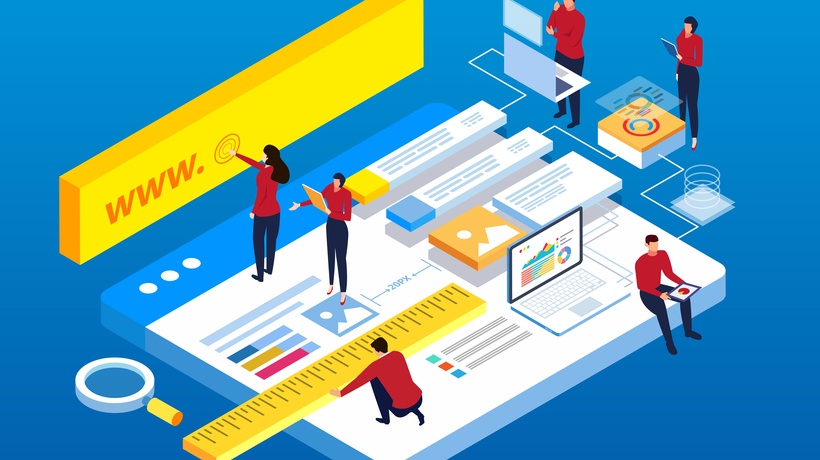Leveraging Web Development For Enhanced eLearning
The digital revolution has significantly reshaped the world of education. eLearning, in particular, has seen explosive growth in recent years, driven by the need for flexible and accessible learning solutions. This surge in demand has created a powerful intersection between web development and eLearning sales, where the art of creating engaging online learning platforms meets the science of selling them.
The eLearning Market
eLearning has undergone a remarkable transformation. The global eLearning market was valued at over $144 billion in 2019 and is projected to reach $375 billion by 2026. Several factors, including the need for remote and flexible learning options, professional development, and a desire for lifelong learning, fuel this rapid growth.
The Importance Of The eLearning Market
The importance of the eLearning market cannot be overstated. It addresses a wide range of needs and serves diverse demographics. In a world where lifelong learning is imperative, eLearning offers a flexible and accessible means to acquire knowledge and develop skills.
Whether it's upskilling for a career change, enhancing job performance, or simply satisfying intellectual curiosity, eLearning provides a platform for continuous personal and professional growth. Furthermore, the global reach of eLearning means it can bridge educational gaps and offer opportunities to those who might not have access to traditional educational institutions.
What Sets eLearning Apart
The eLearning market distinguishes itself from traditional education and even other online sectors in several ways. One of its key features is the adaptability it offers to learners. eLearning platforms often utilize personalized learning paths, ensuring that content is tailored to the individual's needs and progress.
Additionally, the market embraces diverse learning formats, from text-based courses to video lectures, interactive simulations, and gamified content, making it engaging for a wide audience. Furthermore, eLearning allows for self-paced learning, which is particularly valuable for individuals with busy schedules or varying learning speeds. This adaptability is a hallmark of the eLearning market.
eLearning Sales: A Growing Industry
eLearning sales are a significant driver of this thriving market. eLearning content providers, platforms, and institutions have recognized the potential for growth and profitability. These entities have not only expanded the range of courses and subjects available but have also diversified their revenue streams.
Sales of eLearning content, subscriptions, and certifications have flourished, attracting both individual learners and corporate clients seeking to upskill and reskill their workforce. The vast array of options for monetization, including one-time purchases, subscriptions, and tiered pricing models, has contributed to the financial success of this market.
The Role Of Web Development In eLearning
Creating eLearning Platforms
Web development is the cornerstone of eLearning. Without it, there would be no digital learning platforms. It's responsible for creating the infrastructure, User Interfaces, and functionality that make online education possible. A well-designed eLearning platform can significantly impact user engagement and retention.
Interactivity And Engagement
Web development enhances interactivity and engagement in eLearning content. Features like quizzes, simulations, and discussion forums are all made possible by web developers. These elements not only make learning more engaging but also provide valuable data for sales and marketing strategies.
Customization And Scalability
Web development also plays a crucial role in creating customizable and scalable eLearning solutions. Educators and businesses can tailor content to meet the specific needs of their learners, whether they are K-12 students, university graduates, or corporate professionals. Scalability ensures that the platform can grow as the user base expands.
Effective Strategies For Enhancing Your eLearning Website To Drive Sales
In the competitive world of online education, continually improving your eLearning website is essential to attract and retain users, ultimately boosting sales. Here are several key strategies to consider:
User-Centric Design And Navigation
Ensure that your website is user-friendly and intuitive. Streamline the navigation so that users can easily find courses, access content, and interact with the platform. A clear and responsive design will create a positive User Experience, making it more likely for visitors to become paying customers.
High-Quality Content
Invest in high-quality, up-to-date content that meets the needs of your target audience. Engaging, relevant, and well-structured courses are more likely to attract paying customers. Offering a variety of content types, such as video lectures, quizzes, interactive simulations, and downloadable resources, can cater to different learning styles.
Streamlined Checkout Process
Ensure that the process of purchasing courses or subscriptions is as simple and efficient as possible. Minimize the number of steps required for checkout, offer multiple payment options, and consider implementing one-click purchasing to reduce friction in the sales process.
Customer Reviews And Testimonials
Display authentic customer reviews and testimonials on your website. Positive feedback and success stories can instill confidence in potential customers, helping them overcome any reservations they may have about your eLearning platform.
Personalization And Recommendations
Implement algorithms that analyze user behavior and preferences. Use this data to personalize the learning experience by suggesting relevant courses, modules, or resources to each user. Personalization not only enhances engagement but also increases the likelihood of upselling additional content or subscription plans.
Mobile Optimization
In the mobile-first era, it's crucial to optimize your Learning website for mobile devices. Many learners access content on their smartphones and tablets, so responsive design is a must. Mobile-friendly features, such as touch-friendly controls and fast-loading pages, can make a significant impact on user satisfaction and sales.
Data-Driven Optimization
Use data analytics tools to monitor user behavior, track the effectiveness of your strategies, and identify areas for improvement. Continuously A/B test different elements of your website, such as pricing models, call-to-action buttons, and content layout, to determine what drives the best sales results.
By implementing these strategies, you can not only improve the functionality and appeal of your eLearning website but also increase your chances of converting visitors into paying customers, ultimately boosting your sales.
Conclusion
In the ever-evolving landscape of eLearning, web development and sales have become inseparable partners. The success of an eLearning platform depends not only on the quality of its content but also on how well it leverages web development to engage users and drive sales. As the eLearning market continues to grow, businesses and educators must recognize the critical importance of this intersection and invest in it for mutual success.
Editor's Note: Looking for ways to boost eLearning sales? Check out our advertising solutions to find the right option for you.









